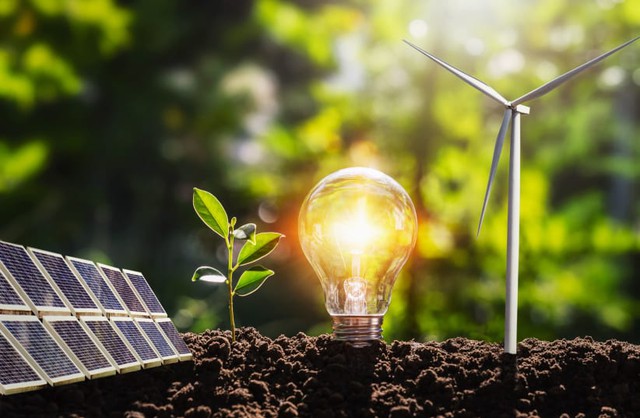Gov't approves plan to realize national energy master plan for 2021-2030
VGP - Deputy Prime Minister Tran Hong Ha has signed a decision approving a plan to implement the National Energy Master Plan for the period of 2021 - 2030, with a vision to 2050.

Illustration photo
The plan aims to ensure effective implementation of the National Energy Master Plan, figures out list of specific projects, and identify resources and coordination mechanisms for the implementation process.
The energy sector includes five subsectors: oil and gas, coal, power, new and renewable energy, according to the plan.
The oil and gas subsector includes oil and gas exploitation and exploration and exploitation, gas industry, oil and gas processing, transportation, storage and distribution of petroleum products.
The coal subsector comprises projects on coal exploration, coal mining, coal screening and processing, infrastructure serving coal industry development (including coal export and import ports and other infrastructure projects), mine closure.
The new energy and renewable energy subsector covers wind energy, solar energy, biomass energy, biofuel, biogas, solid waste energy, small sized hydroelectric power projects, other renewable energy (tidal, wave, geothermal), renewable energy (hydrogen, ammonia, fuels derived from hydrogen, synthetic fuels).
Electricity subsector follows the National Electricity Development Planning VIII in the 2021-2030 period with a vision towards 2050 which was approved by the Prime Minister.
The Government estimates that total land areas for developing energy sector facilities and infrastructure would be around 93,000-97,000 hectares in the 2021-2030 period and over 171,000 hectares in the 2031-2050 period, respectively.
Total investment capital for the energy sector is projected to reach VND4,133-4,808 trillion in the 2021-2030 period.
The Deputy Prime Minister tasked the Ministry of Industry and Trade work with relevant ministries and agencies to build an energy database, including data on planning and planning implementation to serve as a basis for monitoring planning implementation and draft the National Planning Information System and Database.
The Ministry of Planning and Investment was assigned to develop mechanisms and policies to attract FDI and ODA and private capital resources to develop the energy sector.
The National Energy Master Plan sets a target for total primary energy supply to reach 155 million tons of oil equivalent by 2030 and between 294 and 311 million ton by 2050.
The total national oil and petroleum reserves (including crude oil and products) is expected to rise to 75-80 days of net imports by 2030 and gradually to 90 days after that year.
Regarding equitable energy transition, the master plan sets a target for the share of renewable energy in the total primary energy to be 15-20 percent by 2030 and about 80-85 percent by 2050.
It also aims to achieve energy savings of about 8-10 percent by 2030 and about 15-20 percent by 2050 compared to the normal development scenario.
The projected greenhouse gas emissions are about 399-449 million tons by 2030 and about 101 million tons by 2050.
The Government also sets goal to cut the emissions by 17-26 percent by 2030 and about 90 percent by 2050 compared to the normal development scenario./.

